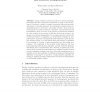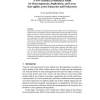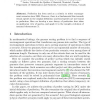22 search results - page 2 / 5 » Multi-break rearrangements and chromosomal evolution |
114
click to vote
RECOMB
2006
Springer
15 years 12 months ago
2006
Springer
Abstract. During evolution, genomes are subject to genome rearrangements that alter the ordering and orientation of genes on the chromosomes. If a genome consists of a single chrom...
107
click to vote
RECOMB
2010
Springer
14 years 9 months ago
2010
Springer
Background: Genomic rearrangements have been studied since the beginnings of modern genetics and models for such rearrangements have been the subject of many papers over the last ...
98
Voted
RECOMB
2007
Springer
15 years 12 months ago
2007
Springer
Multi-break rearrangements break a genome into multiple fragments and further glue them together in a new order. While 2break rearrangements represent standard reversals, fusions, ...
109
click to vote
RECOMB
2010
Springer
14 years 9 months ago
2010
Springer
Abstract. Perfection has been used as a criteria to select rearrangement scenarios since 2004. However, there is a fundamental bias towards extant species in the original definitio...
TCS
2008
14 years 11 months ago
2008
Most genome rearrangements (e.g., reversals and translocations) can be represented as 2-breaks that break a genome at 2 points and glue the resulting fragments in a new order. Mul...



